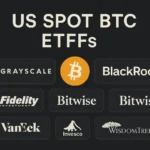What Is Bitcoin Mining?
Bitcoin mining refers to the process of validating and recording transactions on the Bitcoin network. The primary purpose of Bitcoin mining is twofold: validating transactions to prevent fraud and adding new blocks to the blockchain, thereby creating new Bitcoins in a decentralised manner.
- The process of bitcoin mining involves the verification of new transactions against . The Bitcoin network, which results in the production of new bitcoins.
- Bitcoin mining is the process by which Bitcoin transactions are validated digitally on the blockchain. The Bitcoin network added to the blockchain ledger.
- It is done by solving complex cryptographic hash puzzles to verify blocks of transactions. That are updated on the decentralised blockchain ledger.
Solving these puzzles requires powerful computing power and sophisticated equipment. In return, miners are rewarded with Bitcoin, which is then released into circulation, hence the name Bitcoin mining.
What Is Bitcoin?
Bitcoin is the first decentralised digital currency that allows peer-to-peer transfers without any intermediaries such as banks, governments, agents, or brokers, using the underlying technology of blockchain. Anyone around the world on the network can transfer Bitcoins to someone else on the network regardless of geographic location; you just need to open an account on the Bitcoin network and have some Bitcoins in it, and then you can transfer those Bitcoins. How do you get Bitcoins in your account? You can either purchase them online or mine them. Bitcoin can be used for online purchases and/or as an investment instrument. Primarily it’s used to buy goods and services.
Bitcoin Advantages
Compared to traditional fiat currencies, assets can be transferred faster on the Bitcoin network. The system also has lower transaction fees because it’s decentralised and there are no intermediaries, and it is cryptographically secure—the identities of the sender and the receiver are kept hidden, and it is impossible to counterfeit or hack the transactions. Plus, all the information is available on a public ledger, so anyone can view the transactions.

Unveil the fascinating realm of Bitcoin mining while fortifying your cybersecurity expertise through our comprehensive cybersecurity course. Learn the intricacies of blockchain technology and cryptographic protocols that underpin cryptocurrencies like Bitcoin, all while mastering the strategies to secure these decentralised systems. With hands-on training in ethical hacking, digital forensics, and network security, you’ll be equipped to not only mine cryptocurrencies but also safeguard them from evolving cyber threats.
What Is Crypto Mining?
Cryptocurrency mining is a process of creating new digital “coins.” However, that is as far as simplicity goes. The process of recovering these coins requires solving complex puzzles, validating cryptocurrency transactions on a blockchain network, and adding them to a distributed ledger to locate them.
What Is Blockchain?
As mentioned, blockchain is the underlying technology of Bitcoin. Blockchain is a public distributed ledger in which transactions are recorded in chronological order. Any record or transaction added to the blockchain cannot be modified or altered, meaning transactions are safe from hacking. A block is the smallest unit of a blockchain, and it is a container that holds all the transaction details. A block has four fields, or primary attributes:
- Previous hash: This attribute stores the value of the hash of the previous block, and that’s how the blocks are linked to one another.
- Data: This is the aggregated set of transactions included in this block—the set of transactions that were mined and validated and included in the block.
- Nonce: In a “proof of work” consensus algorithm, which Bitcoin uses, the nonce is a random value used to vary the output of the hash value. Every block is supposed to generate a hash value, and the nonce is the parameter that is used to generate that hash value. The proof of work is the process of transaction verification done in blockchain.
- Hash: This is the value obtained by passing the previous hash value, the data, and the nonce through; it is the digital signature of the block.
SHA-256 is a cryptographic hash algorithm that produces a unique 256-bit alphanumeric hash value for any given input, and that is the unique feature of this cryptographic algorithm: Whatever input you give, it will always produce a 256-bit hash.

3 Concepts of Blockchain
To understand Bitcoin mining, you have to first understand the three major concepts of blockchain.
- Public distributed ledger: A distributed ledger is a record of all transactions maintained in the blockchain network across the globe. In the network, the validation of transactions is done by Bitcoin users.
- SHA-256: Blockchain prevents unauthorised access by using a hash function called SHA-256 to ensure that the blocks are kept secure. They are digitally signed. Their hash value, once generated, cannot be altered. SHA-256 takes an input string of any size and returns a fixed 256-bit output, and it is a one-way function—you cannot derive the reverse of the input fully from the output (what you have generated).
- Proof of work: In blockchain mining, miners validate transactions by solving a difficult mathematical puzzle called proof of work. To do that, the primary objective of the miner is to determine the nonce value, and that nonce value is the mathematical puzzle that miners are required to solve to generate a hash that is less than the target defined by the network for a particular block.

Bitcoin Profit and Bitcoin Mining Profitability
Bitcoin Profit is an automated crypto robot that helps trade Bitcoins and other cryptocurrencies to earn profit. It uses an AI algorithm to identify trading opportunities. The crypto market can automatically close and open your trade, saving your time and manual intervention during trading. It claims that around 85% of its trades produce profits in normal market conditions. However, technical knowledge is required to calculate the profit generated through the Bitcoin mining process.
Talking about the actual Bitcoin profit—the real money making—it depends upon. The cost of the AISC hardware, electricity consumption, and the effectiveness of the mining software. Bitcoin mining profitability has decreased in recent times compared to . The previous years because of the rise in electricity costs, costlier hardware, and difficulty in mining. To an increase in competition and a decrease in the Bitcoin prices. Earlier, Bitcoin mining was initiated using CPUs and easy AI algorithms, making it profitable and less costly.







